Related Research Articles

The Emirate of Sharjah is one of the emirates of the United Arab Emirates, which covers 2,590 square kilometres (1,000 sq mi) and has a population of over 1,400,000 (2015). It comprises the capital city of Sharjah, after which it is named, and other minor towns and exclaves such as Kalba', Al Dhaid, Dibba Al-Hisn and Khor Fakkan.
Najat Makki is an Emirati visual artist. She is a member of the Dubai Cultural Council. and one of the pioneers in Emirati contemporary art scene.

Sharjah is the third-most populous city in the United Arab Emirates, after Dubai and Abu Dhabi. It is the capital of the Emirate of Sharjah and forms part of the Dubai-Sharjah-Ajman metropolitan area.

Al Fahidi Historical Neighbourhood is a historic district in Dubai, United Arab Emirates (UAE).
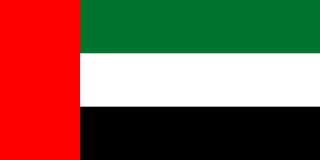
The Emiratis are the native Arab citizen population of the United Arab Emirates (UAE). Within the UAE itself, they number approximately 1.5 million.
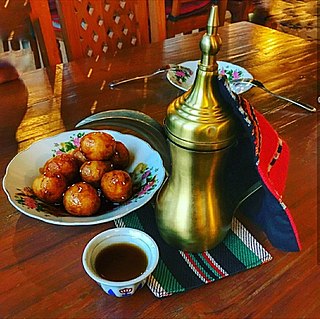
Emirati cuisine is the local traditional Arabic cuisine of the United Arab Emirates. It is part of the Eastern Arabian cuisine and shares similarities with cuisines from neighboring countries, such as Omani cuisine and Saudi Arabian cuisine, as well as influences from different Middle Eastern and Asian cuisines.

The Culture of the United Arab Emirates is part of the culture of Eastern Arabia. Its historical population was a small tribal community that changed with the arrival of an influx of foreign nationals in the mid-20th century. Emirati culture is a blend of Arabian, Islamic, and Persian cultures, with influences from the cultures of East Africa and Indian Subcontinent. Islam has had a prominent influence on local architecture, music, attire, cuisine, and lifestyle.

The Sharjah Museum of Islamic Civilization is a museum in Sharjah, United Arab Emirates (UAE). The museum, opened in 2008, covers Islamic culture, with more than 5,000 artifacts from the Islamic world. Objects include calligraphy, carvings, ceramics, coins, glass, manuscripts, metalwork, and scientific instruments. It was formerly known as the Islamic Museum and opened in 1996 before being moved and re-housed in the current building.

Abdul Qader Al Rais is a multi-award-winning, Emirati painter noted for his abstract art which combines geometric shapes with Arabic calligraphy. He is known for including calligraphy and abstracted objects in his paintings, and regarded as a colour master.

The Sharjah Art Museum is an art museum in the city of Sharjah, United Arab Emirates. It was housed in Bait Al Serkal in Al Shuwaihean Area. It is one of the leading art institutions in the Persian Gulf region.
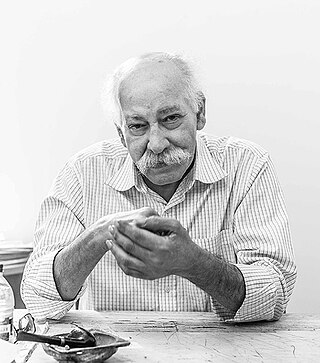
Hassan Sharif was an Emirati artist and prolific writer. He lived and worked in Dubai, United Arab Emirates. He is widely regarded as a central figure in contemporary and conceptual art in the region, often known as the father of conceptual art in the Gulf. He founded Al Marijah Art Atelier, and through his extensive work and writings, he inspired the next generation of artists in the United Arab Emirates. His work is represented in major public collections, such as the Guggenheim New York, Guggenheim Abu Dhabi, Centre Pompidou, Mathaf Arab Museum of Modern Art, Tate Modern, and Sharjah Art Foundation.
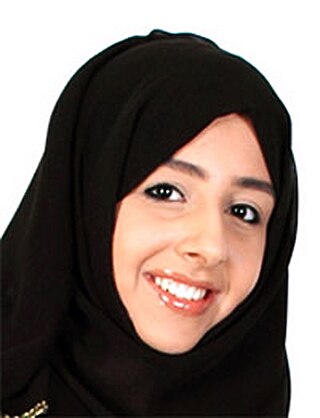
Maisoon Al Saleh is an Emirati visual artist based out of Dubai. Her artistic style is surrealism with commentary on modern and traditional Emirati culture. Her paintings often feature the skeletons of humans and animals.
Ebtisam AbdulAziz is a contemporary Emirati artist and writer born and raised in Sharjah, UAE. She works with geometry and mathematics to address issues of belonging and identity through installations, performance art and other media.
Mohammed Kazem is a contemporary Emirati artist working in Dubai, United Arab Emirates. He works primarily with video, sound art, photography, found objects and performance art.
Moosa Al Halyan is an Emirati surrealist painter from Dubai, United Arab Emirates and a member of the Emirates Fine Arts Society.

Fujairah City is the capital of the emirate of Fujairah in the United Arab Emirates. It is the seventh-largest city in UAE, located on the Gulf of Oman. It is the only Emirati capital city on the UAE's east coast. The city of Fujairah is an industrial and commercial hub located on the east coast of the Indian Ocean that sits at the foothills of the Hajar Mountains.
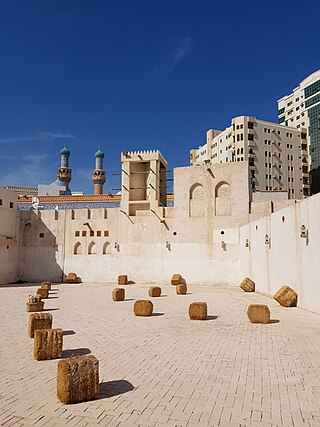
The Heart of Sharjah is a cultural heritage project that aims to preserve and restore the old town of Sharjah in the United Arab Emirates (UAE) and return it to its 1950s state.

Barjeel Art Foundation is a non-profit arts organisation based in Sharjah, United Arab Emirates. The foundation was established in 2010 by Emirati commentator Sultan Sooud Al Qassemi to manage and exhibit his personal art collection. There are over 1,000 pieces of modern and contemporary art in the foundation's art collection. The organisation primarily focuses on artwork produced by Arab artists worldwide and includes paintings, sculptures and installations.
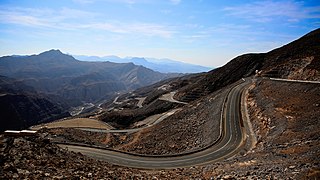
Tourism in the United Arab Emirates is an important component of the Emirati economy, and consists of domestic and international components. In 2018, tourist industry composed over 164.7 billion dirham to country's GDP.
Sharjah Calligraphy Museum is a museum celebrating local and international artists and calligraphers, their distinctive masterpieces displayed all throughout in exhibits set to embrace the beauty of Arabic calligraphy. It aims to highlight the importance of preserving this art.
References
- ↑ "You are being redirected..." www.heartofsharjah.ae. Retrieved 2023-04-09.
- 1 2 3 4 5 6 7 8 9 "Sharjah Heritage Museum. Art Destination Sharjah". universes.art. Retrieved 2023-04-09.
- 1 2 "Sharjah Heritage Museum - List of Venues and Places in UAE | Comingsoon.ae". Coming Soon in UAE. Retrieved 2023-04-09.
- ↑ "Dagger Craftsmanship in the UAE-A Craft of Authenticity and Creativity exhibition - Sharjah Events". sharjahevents.ae. Retrieved 2023-04-09.